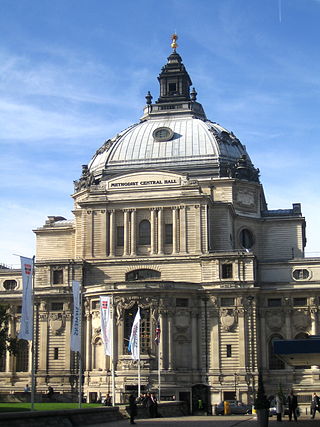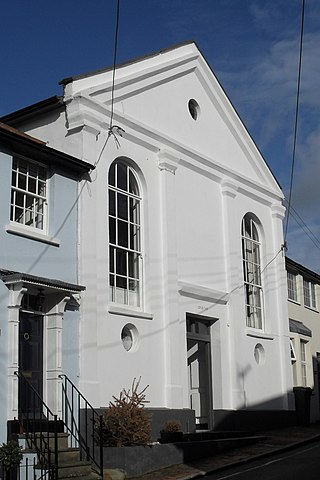History
Although it was not his intention to establish a new Christian denomination, John Wesley's clandestine ordinations in 1784 [lower-alpha 1] had made separation from the established Church of England virtually inevitable. [4] Later in the same year, Wesley pronounced the first official Methodist Conference of 100 members, who were to govern the society of the Methodist movement after his death. [5] In 1787 Wesley, under legal advice, decided to license his chapels and itinerant preachers under the Toleration Act 1689, albeit "not as dissenters but simply 'preachers of the gospel '". [6] Wesley died in 1791. The estrangement between the Church of England and the Wesleyan Methodists was entrenched by the decision of the Methodist Conference of 1795 to permit the administration of the Lord's Supper in any chapel where both a majority of the trustees and a majority of the stewards and leaders allowed it. [7] This permission was extended to the administration of baptism, burial and timing of chapel services, bringing Methodist chapels into competition with the local parish church. Consequently, known Methodists were often excluded from the Church of England, accelerating the trend for Methodism to become entirely separate from the established church.
For half a century after Wesley's death, the Methodist movement was characterised by a series of divisions, normally on matters of church government (e.g. Methodist New Connexion) and separate revivals (e.g. Primitive Methodism in Staffordshire, 1811, and the Bible Christian Church in south-west England, 1815). The original movement became known as the "Wesleyan Methodist Connexion" to distinguish itself from these groups. During the Napoleonic era, the Wesleyan Methodist hierarchy was eager to display loyalty to a government wary of radicalism, leading to a politically conservative stance among both the leadership and many members, in contrast to other Methodist groups. [3] The 1891 Wesleyan conference endorsed the use of the term Church rather than Connexion, although it retained a connexional polity. [8]

In 1898, Robert Perks, MP for Louth, proposed the creation of the Wesleyan Methodist Twentieth Century Fund (also known as the 'One Million Guinea Fund') which aimed to raise one million guineas (£1.1s. or £1.05) from one million Methodists to build a Central London church to build a world centre of Wesleyan Methodism and to expand the mission of the Wesleyan Church at home and overseas. [9] On 8 November 1898, the fund was officially launched at Wesley's Chapel in City Road, London. The fund had raised £1,073,682 by the time it closed in 1909, part of which was used to purchase the former Royal Aquarium site for the construction of the Methodist Central Hall, Westminster, [10] and to support construction and extension of other Wesleyan Methodist churches and Sunday schools around the UK and overseas. [11]
Unification
In 1932, the Wesleyan Methodist Church in England had 447,122 members, against a combined total of 338,568 from the Primitive Methodist and United Methodist Churches. That same year, the "Methodist Union" saw the Wesleyan Methodists reunite with these groups. [3] The Union was driven by a desire for greater unity among Methodists and to streamline administrative structures. The resulting Methodist Church of Great Britain became the largest Methodist denomination in the country, bringing together various strands of Methodism under one organisation.














